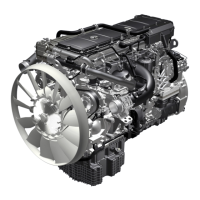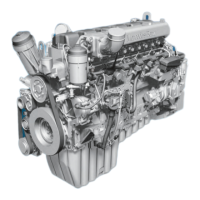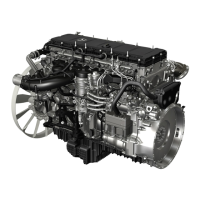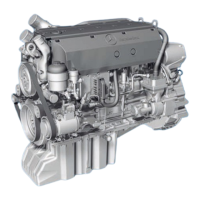Exhaust system
34
Combustion
Introduction of New Generation of 4-Cylinder Inline Engines, OM 651
q
Oxidation catalytic converter
The oxidation catalytic converter is part of the exhaust
system and is located in the exhaust tract down-
stream of the turbocharger.
The ceramic body is made of highly temperature resis-
tant magnesium-aluminum-alumosilicate and has
several thousand sm
all passages running all the way
though it. The ceramic monolith reacts extremely
sensitively to physical stress and is fixed in place
inside a stainless steel housing.
Diesel particulate filter (DPF)
The diesel particulate filter (DPF) forms a unit with the
oxidation catalytic converter.
The ceramic DPF is made of silicon carbide and coated
with platinum. The individual channels open
out alter-
nately to the front or to the rear and are separated
from each other
by porous filter walls.
When the unfiltered exhaust gas flows through the
porous
ceramic honeycomb filter, the soot particles
are held back by the porous filter walls. The CDI
control unit measures the load condition of the DPF
via the pressure differential sensor. The exhaust pres-
sure upstream of and downstream of the DPF is
measured for this purpose. Regeneration
of the DPF is
initiated once a defined value is reached. Tempera-
tures of over 600 °C are necessary to burn off the
soo
t. The CDI control unit initiates the following steps
in order to reach these high temperatures:
•Post injection
• Exhaust gas recirculation w
ith intake air throttling
• DPF glow function
The individual pollutant components are oxi-
dized as follows:
Before oxidation After oxidation
2CO + O
2
2CO
2
4HC + 5O
2
2H
2
O + 4CO
2
Schematic illustration of oxidation catalytic converter and DPF
1 Oxidation catalytic converter
2DPF
CO Carbon monoxide
CO
2
Carbon dioxide
O
2
Oxygen
HC Hydrocarbon
H
2
OWater
N
2
Nitrogen
NO
2
Nitrogen oxide
PM Particulate matter
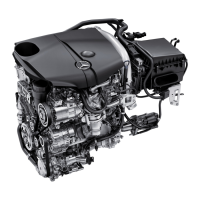
